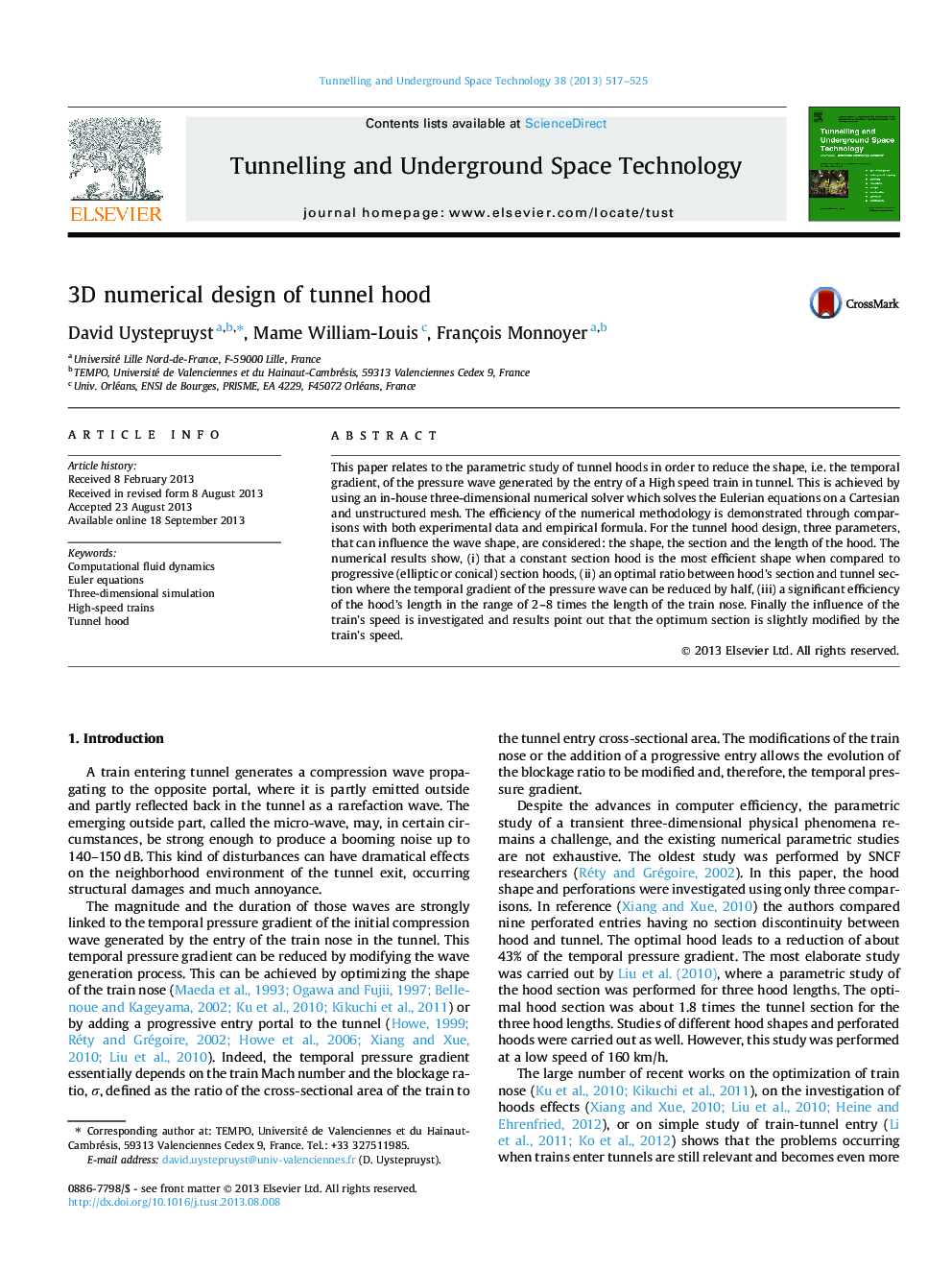| Article ID | Journal | Published Year | Pages | File Type |
|---|---|---|---|---|
| 310679 | Tunnelling and Underground Space Technology | 2013 | 9 Pages |
•Numerical parametric study of tunnel hoods of the French TGV to reduce disturbances.•Parameters are the shape, the section and the length of the hood.•A study of the train velocity is also performed.•Validations are performed to prove the ability of the methodology.•Results show the possibility to divide the amplitude of disturbances by 2.
This paper relates to the parametric study of tunnel hoods in order to reduce the shape, i.e. the temporal gradient, of the pressure wave generated by the entry of a High speed train in tunnel. This is achieved by using an in-house three-dimensional numerical solver which solves the Eulerian equations on a Cartesian and unstructured mesh. The efficiency of the numerical methodology is demonstrated through comparisons with both experimental data and empirical formula. For the tunnel hood design, three parameters, that can influence the wave shape, are considered: the shape, the section and the length of the hood. The numerical results show, (i) that a constant section hood is the most efficient shape when compared to progressive (elliptic or conical) section hoods, (ii) an optimal ratio between hood’s section and tunnel section where the temporal gradient of the pressure wave can be reduced by half, (iii) a significant efficiency of the hood’s length in the range of 2–8 times the length of the train nose. Finally the influence of the train’s speed is investigated and results point out that the optimum section is slightly modified by the train’s speed.
